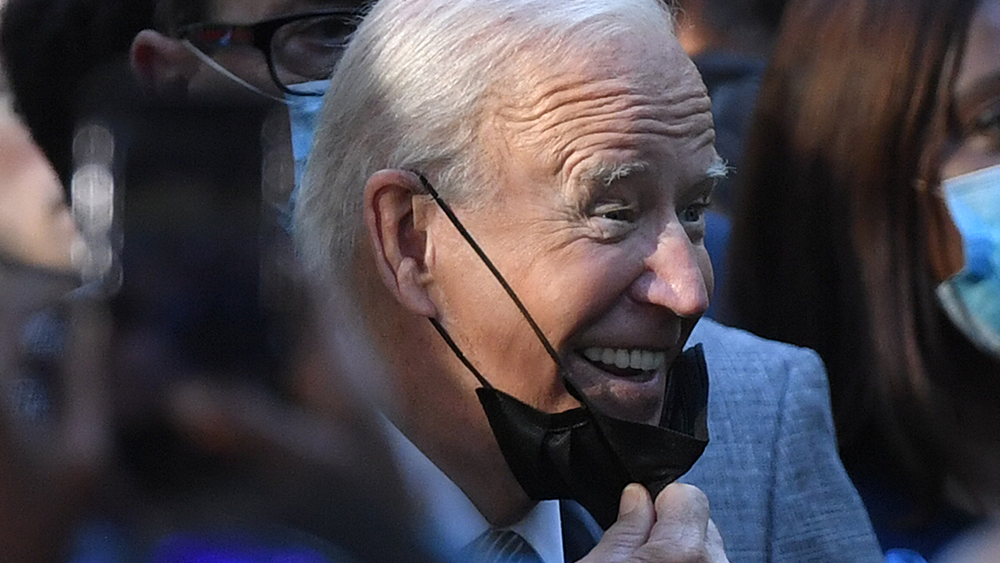States ending pandemic unemployment benefits see increase in jobs as more people decide to work
07/22/2021 / By Ramon Tomey

States that opted out of the federal government’s pandemic unemployment benefits program in June saw an increase in their job numbers. According to the Daily Caller, these mostly Republican states experienced a 33 percent drop in new jobless claims compared to the roughly 4 percent drop in states that did not. Stagnating job growth and a worsening nationwide labor shortage were the reasons cited by states for pulling out of the program.
The Federal Pandemic Unemployment Compensation (FPUC) program was a weekly $300 bonus given to jobless Americans on top of state benefits. First signed into law in late March 2020, it was originally set to expire a year later. However, President Joe Biden extended the program’s duration until Sept. 6, 2021, through the American Rescue Plan. Since then, the economy has continued to bounce back and job openings have steadily increased.
GOP-led Mississippi joined Iowa, Alaska and Missouri in ending their participation in ending federal unemployment benefits. Following an underwhelming April jobs report, Mississippi Gov. Tate Reeves announced on May 10 that his state would no longer participate in the FPUC program beginning June 12. Reeves told the Daily Caller that conversations with Mississippi small business owners and workers influenced his May 10 announcement. He added that the business owners and workers were “severely understaffed and overworked” as business activity picked up.
“I continued to see increases in the number of unemployed and, in some weeks, increases in the new regular claims that were coming in. So I felt we had to make a decision – because if we wanted to experience a full economic recovery, we had to get our people back to work,” the Mississippi governor said.
All in all, 25 states pulled out of the FPUC program in June or early July 2021. The state of Louisiana said it will withdraw from the program on July 31. (Related: States that stopped federal pandemic benefits see rapid job recovery gains.)
Economist: Pay for unemployment, get more unemployment
Labor officials in Iowa and Alaska have also noted the effects of ending FPUC involvement on their states. Iowa Workforce Development Director Beth Townsend said in a statement to the Daily Caller: “It is a good sign to see more Iowans enter the labor force after leaving federal unemployment programs mid-June.”
Alaska Department of Labor Deputy Commissioner Catherine Munoz meanwhile said that employers across the state have reported worker shortages in all industries over the past several months. “It’s too early to assess the full impacts of ending the $300 weekly payment, but the trend seems to indicate that the economy is opening up and people are successfully finding employment,” she added.
According to a recent Department of Labor report, total U.S. job vacancies hit 9.21 million in May 2021. Business groups and other GOP politicians have blamed the labor shortage on the FPUC. A recent poll by data intelligence firm Morning Consult appeared to support the theory. The poll said that 13 percent of the more than 14 million Americans receiving unemployment benefits recently turned down job offers because they earned enough in government assistance.
Former White House Council of Economic Advisers Chief Economist Casey Mulligan told the Daily Caller: “If you pay for something, you’re going to get more of it. If you pay for unemployment, you’ll get more unemployment.” Mulligan published two reports in 2020 that predicted that continuing the FPUC would lead to higher job openings. One of the reports he authored said that job vacancies rapidly declined in August 2020, as soon as the first tranche of pandemic benefits ended.
Thus, the U.S. Chamber of Commerce (USCC) pointed out the need to address “the country’s ever-worsening workforce crisis” in a June 8 press release. USCC Executive Vice President and Chief Policy Officer Neil Bradley said in the release: “America’s great economic resurgence is being held back by an unprecedented workforce shortage – and it’s getting worse.” (Related: Nobody wants to work: Labor shortage holds back restaurant industry as states ease pandemic restrictions.)
Bradley added: “We are seeing an increasing number of businesses turning down work and only partially reopening because they can’t find enough workers. He then called on the remaining governors to stop giving out the $300 weekly benefit under the FPUC program. The USCC official also urged the governors to utilize pandemic relief funds for rapid job training programs.
Pandemic.news has more stories about the federal government’s pandemic unemployment benefits program to help jobless Americans.
Sources include:
Tagged Under: covid-19 pandemic, federal benefits, Federal Pandemic Unemployment Compensation, job market, job openings, jobless claims, labor force, labor shortage, pandemic benefits, unemployment benefits, unemployment claims, welfare checks, welfare program
RECENT NEWS & ARTICLES
COPYRIGHT © 2017 MARKET CRASH NEWS

















